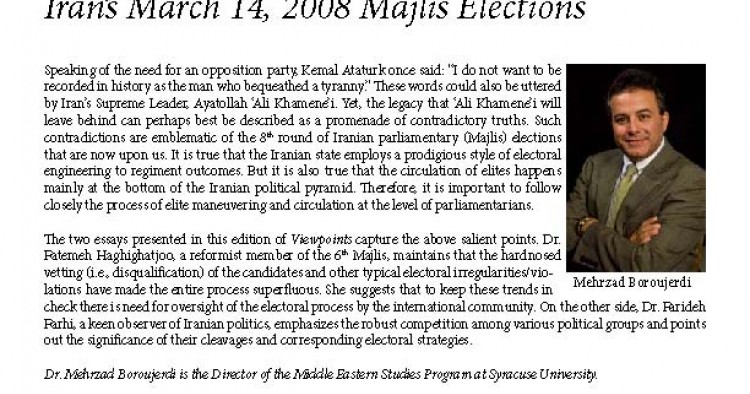Speaking of the need for an opposition party, Kemal Ataturk once said: “I do not want to be recorded in history as the man who bequeathed a tyranny.” These words could also be uttered by Iran’s Supreme Leader, Ayatollah ‘Ali Khamene’i. Yet, the legacy that ‘Ali Khamene’i will leave behind can perhaps best be described as a promenade of contradictory truths. Such contradictions are emblematic of the 8th round of Iranian parliamentary (Majlis) elections that are now upon us. It is true that the Iranian state employs a prodigious style of electoral engineering to regiment outcomes. But it is also true that the circulation of elites happens mainly at the bottom of the Iranian political pyramid. Therefore, it is important to follow closely the process of elite maneuvering and circulation at the level of parliamentarians.
This Viewpoints explores different sides of the March 14, 2008 elections in Iran. Dr. Fatemeh Haghighatjoo, a reformist member of the 6th Majlis, maintains that the hardnosed vetting (i.e., disqualification) of the candidates and other typical electoral irregularities/violations have made the entire process superfluous. She suggests that to keep these trends in check there is need for oversight of the electoral process by the international community. On the other side, Dr. Farideh Farhi, a keen observer of Iranian politics, emphasizes the robust competition among various political groups and points out the significance of their cleavages and corresponding electoral strategies.
The Middle East Institute (MEI) is an independent, non-partisan, non-for-profit, educational organization. It does not engage in advocacy and its scholars’ opinions are their own. MEI welcomes financial donations, but retains sole editorial control over its work and its publications reflect only the authors’ views. For a listing of MEI donors, please click here.













